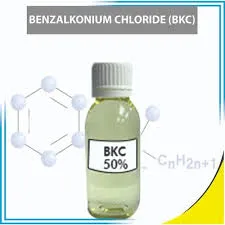polyaluminium chloride water treatment
Polyaluminium Chloride in Water Treatment An Overview
Polyaluminium chloride (PAC) is an inorganic polymer widely utilized in water treatment processes due to its effectiveness as a coagulant. As environmental concerns grow, the demand for effective and sustainable water treatment solutions has become more critical. PAC stands out among other coagulants by not only improving water quality but also contributing to the reduction of water treatment costs.
PAC is synthesized by the combination of aluminium chloride with aluminium hydroxide, resulting in a versatile compound with varied polymerization degrees and charge densities. This unique structure allows PAC to effectively destabilize colloidal particles in water, promoting the formation of larger aggregates or flocs through a process known as coagulation. These flocs can then be easily removed by sedimentation or filtration, making PAC an essential agent in the purification of drinking water and wastewater.
One of the primary advantages of using PAC in water treatment is its efficiency at a wide range of pH values, usually between 5 and 9. Unlike conventional coagulants such as alum, PAC performs well even in alkaline conditions, which are often encountered in natural water sources. This flexibility makes it a preferred choice for various applications, including municipal water treatment, industrial wastewater management, and even paper manufacturing.
Moreover, PAC demonstrates superior performance in removing turbidity and organic matter when compared to traditional coagulants. This is particularly important in regions where raw water sources are of poor quality, as PAC can effectively eliminate suspended solids and harmful microorganisms, ensuring that treated water meets safety standards set by health organizations worldwide.
polyaluminium chloride water treatment

In addition to its coagulation properties, PAC has a relatively low dosage requirement. This means that smaller volumes are needed to achieve the desired treatment effect, leading to reduced material costs and less waste generation. The reduced volume of sludge produced during the treatment process also simplifies waste management, making PAC not only a cost-efficient option but also a more environmentally friendly one.
Another notable aspect of PAC is its capability to remove heavy metals from wastewater. As industrial activities increase around the globe, the need for effective heavy metal removal has become increasingly vital. PAC has shown effectiveness in binding with metal ions, facilitating their removal from water systems and reducing their toxicity.
Despite its numerous advantages, the use of PAC must be carefully managed. Overdosing can lead to the introduction of excess aluminium into the treated water, which raises health concerns. Continuous monitoring and optimization of dosage levels are essential to mitigate any risks associated with aluminium exposure.
In conclusion, polyaluminium chloride is a powerful tool in the realm of water treatment. Its ability to effectively coagulate and remove impurities, adapt to various water chemistry conditions, and reduce operational costs makes it a preferred choice among water treatment facilities. As the industry continues to evolve, the role of PAC is likely to expand, contributing to improved water quality and environmental protection globally. The future of water treatment is bright with efficient and sustainable solutions like PAC leading the way.
-
lk-319-special-scale-and-corrosion-inhibitor-for-steel-plants-advanced-solutions-for-industrial-water-systemsNewsAug.22,2025
-
flocculant-water-treatment-essential-chemical-solutions-for-purification-processesNewsAug.22,2025
-
isothiazolinones-versatile-microbial-control-agents-for-industrial-and-consumer-applicationsNewsAug.22,2025
-
scale-inhibitor-key-solutions-for-water-system-scale-preventionNewsAug.22,2025
-
organophosphonates-versatile-scale-inhibitors-for-industrial-water-systemsNewsAug.22,2025
-
scale-and-corrosion-inhibitor-essential-chemical-solutions-for-water-system-maintenanceNewsAug.22,2025





